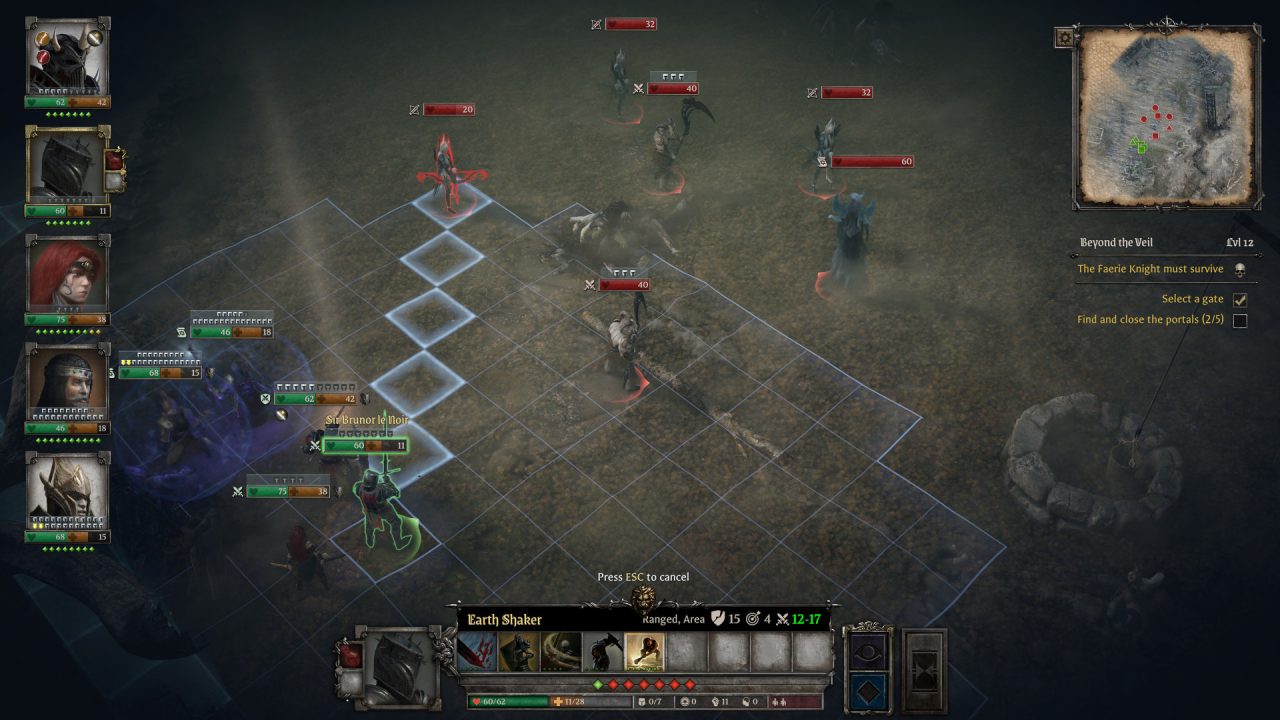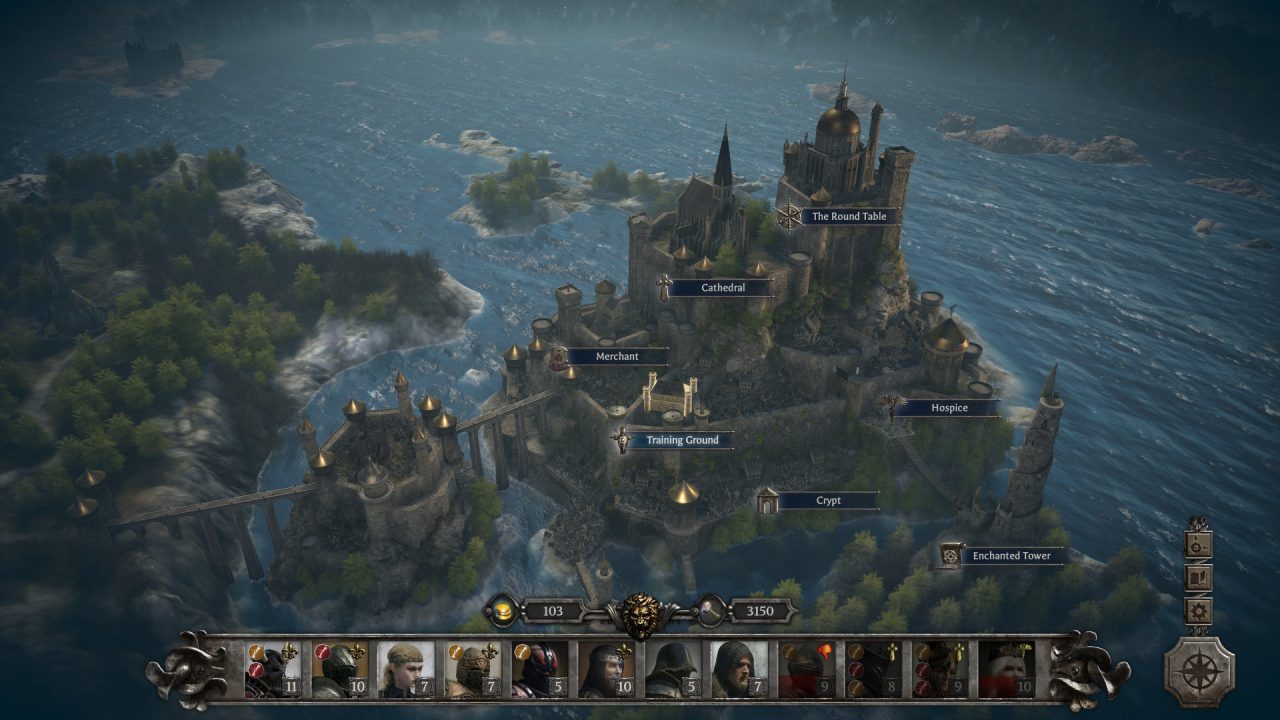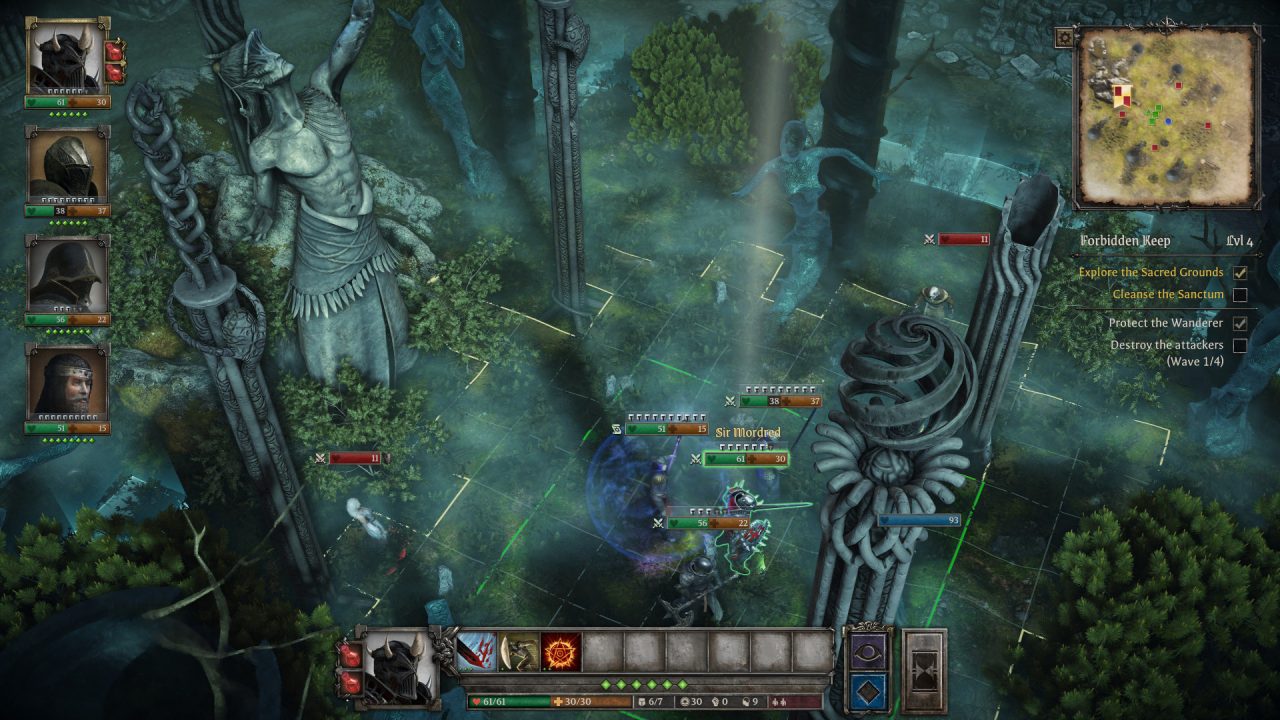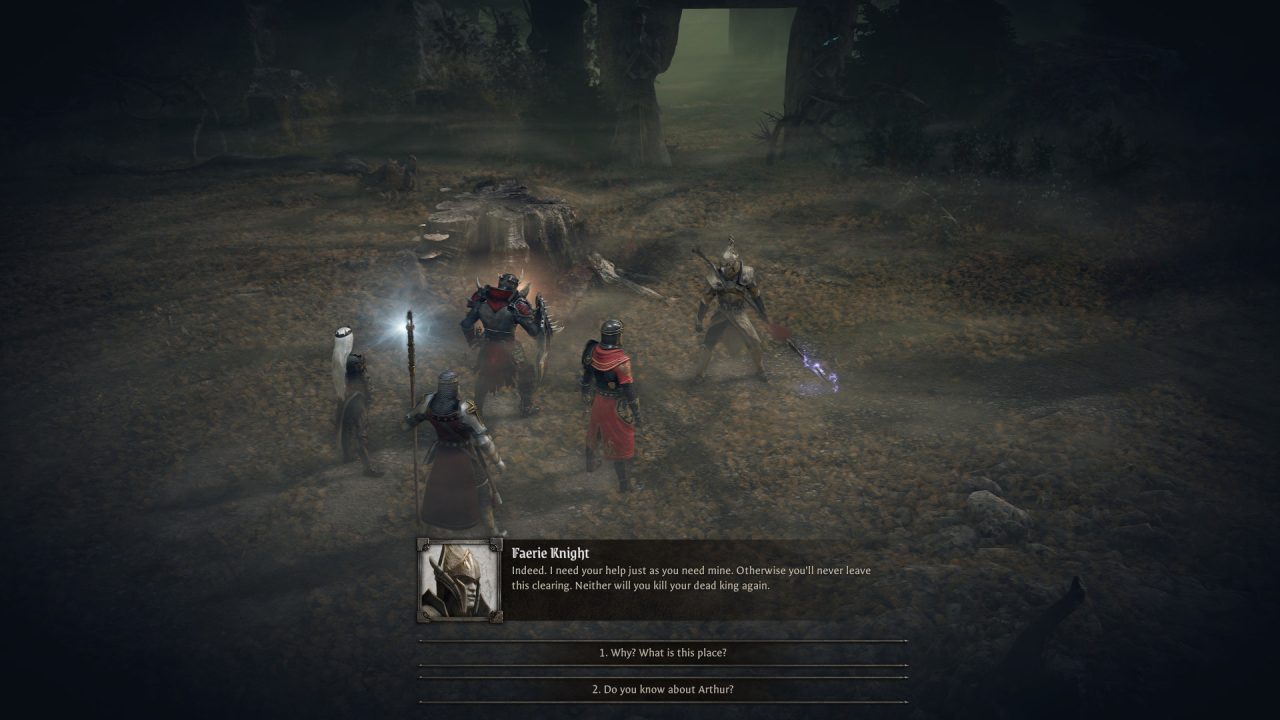All dead, all dead,
All the dreams we had,
And I wonder why I still live on
Although that song is by Queen, it’s still fit for King Arthur: Knights Tale, as Mordred, all of the Knights of the Round Table, and even King Arthur are indeed dead. Yet, they have all come back. This time, The Lady of the Lake has chosen Mordred, Arthur’s mortal enemy, to put an end to the once and future king’s new reign of terror in an ethereal, rotting Avalon. Buried somewhere in this game is a joke about how “legends never die” or “a classic story being given new life” taken further than conventional wisdom should allow.
After rising from the dead in Camelot, Mordred decides that while he’s here, he may as well build up his own Round Table, collecting a cast of characters from the King Arthur mythos to take down the former king. King Arthur: Knight’s Tale is a strategy RPG that has drawn comparisons to XCOM (though, if we’re talking classic strategy games, Jagged Alliance is closer). While the two games have shared ideas, King Arthur: Knight’s Tale also has plenty in common with Japanese tactical RPGs. The colorful cast of beloved characters you would prefer to keep safe from the dreaded permadeath makes “Fire Emblem in Avalon” a not-inaccurate descriptor.

You have to put those characters to their bloody work, though, because NeocoreGames has put together an impressive combat system to command them. Familiarly, battles are turn-based and take place on a grid. With an open-ended AP system, you have flexibility in how you spend those turns on moving, attacking, using items, etc. There’s also a big emphasis on special abilities, which are fun to use and make your characters feel ever more powerful as they learn and improve them. Your units progress through skill trees, and thankfully nearly all of the abilities feel useful with few duds. Fire arrows, teleportation, a dragoon-esque jumping attack—they’re all spectacular. While all of the characters fall into classes, each has a unique ability or two, so no two fighters are exactly alike. Thus, I couldn’t stop myself from reloading a previous save when they accidentally die.
There’s also excellent interplay between battles and managing your forces back at the castle. Characters have multiple types of health: HP, vitality, and armor, which can block physical damage but also wears down. It’s not so bad when your fighters lose HP, which can easily be replenished with potions/resting and can refill after you’ve completed the current quest. But once they run out of HP, they start to lose vitality, and then all manner of nasty things can happen. When vitality is gone, the character is also gone for good. Recovering vitality requires that your units sit out for at least the next quest, and if they take too many hits, they can also accumulate injuries à la Darkest Dungeon. Injuries also require rest (separate from vitality rest) to heal. But you also need to build up Camelot and purchase and improve your facilities before you can use them. If you’re not careful, your situation can quickly snowball and whittle your Round Table down to sawdust. Much of my brain-burning in this game went into keeping my vassals alive and healthy.
When you’re not working to keep your units out of the infirmary, you have to deal with events and choices that challenge your morality, which the game tracks on a nifty chart. Morality in King Arthur: Knight’s Tale is not simply good versus evil. You can be either a righteous ruler or a tyrant, and you can be devoted to either Christianity or the Old Faith (basically paganism). Because you pick up bonuses along your moral journey based on how heavily you lean to any side, it behooves you to pick one direction (not the British boy band) and stick with it the entire game. Though it does limit role-playing possibilities from time to time, I was still forced to respond to situations out of the necessity of the moment instead of just picking the direction I wanted. Because there are four directions you can go, there’s also incentive for replaying King Arthur: Knight’s Tale, and I didn’t even get all of the bonuses for the direction I chose the first time.

That’s not to say there aren’t downsides. King Arthur: Knight’s Tale is a massive, complex game, so warts are inevitable. The thing I wished for most was an undo button. The game’s difficulty is meant to be part of its draw, so I can respect its unforgiving nature. Unfortunately, enemy targeting is wobbly, and the ability to jump back one move would have felt fair. Besides that, a few other things are lacking compared to other tactical RPGs, like no terrain effects and no ability to trade items between characters in the field. Although I could create a list of things to improve, their impact on my enjoyment was negligible.
At its core, this game is a narrative: an original, albeit weird, take on the King Arthur legend. Making everyone formerly dead is a choice. But it grew on me, and I felt compelled to continue because I often had no idea where it was going next. Though the main quest involves chasing Arthur across Avalon, the overall journey is a grand adventure through a colorful ancient tome. You’re constantly encountering famous characters and tales, feasting on bite-sized snippets of their stories, and exploring enchanting places. If you dive into the side quests, you get even more bits of those legendary stories, briefly touched upon in the main quest. It builds into a nice anthology of those tales, each with some creepy twists on the source material. So many strategy games have a backdrop of deep political intrigue, and though I don’t dislike that, it’s refreshing for King Arthur: Knight’s Tale to be a fun, dark adventure with a hint of mystery about everything. While the game goes for a grimdark aesthetic, there’s enough self-awareness and cheekiness in the writing that it’s not overly heavy. You can’t take it too seriously when a medieval knight in a gruff voice says, “Rest. Kill. Repeat.” or “I came to slay.”
Even though I am far from a King Arthur scholar, I was surprised at how many characters and stories I had some familiarity with in King Arthur: Knight’s Tale. Surely, most people are at least aware of the Holy Grail. But you may also have heard of stories like The Green Knight and Tristan and Isolde, and of course recognize the name Lancelot. If you’re a longtime fan, King Arthur: Knight’s Tale makes for fun variations on the traditional stories. If you’re a newcomer, it makes for an excellent introduction to the original Western fantasy mythos.

King Arthur: Knight’s Tale is among the best-looking strategy games I’ve played. While battles and exploration take place from a typical isometric view, it’s worth zooming in and observing the stunning amount of detail in the intricate characters with spikes and flourishes on their armor and environments, ranging from fog-covered ruins of castles to green meadows where druids have built structures to do weird druid things. In the few cutscenes, the characters are nearly indistinguishable from humans, with only the mouth movements looking odd.
The sound quality, on the other hand, is more mixed. Humming effects for spells and metallic and squishy sounds for making contact with weapons are on point. The heavy, deep-strings-based music maybe presses the grimdark button too hard. The acting quality is also wildly uneven. The actors for the main characters, like Mordred and the Lady of the Lake, are campy, but they also sound appropriately strong and confident. Unfortunately, there’s an odd range of English accents across the rest of the cast, some of which sound ridiculously anachronous. It takes you out of the moment when Merlin rolls in with an American accent, and he’s just one of many. It’s rare, but at least a couple of characters must be from Avalon’s Brooklyn borough.
Beyond the primary and endgame content, NeocoreGames has already released a free DLC titled The Chained God. Instead of controlling smaller units, you take a few gargantuan fighters into battle. While this add-on is under two hours to finish and completely separate from the main game, it’s a unique experience and gives you a small taste of how versatile this system can be. This is good news, as the developer also said they plan to release more content regularly, which only serves to extend the afterlife of an already excellent game.

King Arthur: Knight’s Tale could easily be considered the definitive King Arthur game and likely among the greatest modern media on the subject, especially since there’s little competition. It’s also a top-notch tactical RPG with an unexpectedly compelling story. The gameplay is solid on all levels, especially if you’re looking for a tactical challenge and love using fancy abilities in battle. My playthrough of King Arthur: Knight’s Tale alone took over 50 hours, so there’s plenty to keep you busy, but you can expect even more bloody adventures to come. The king is dead; long live the (new?) king!



